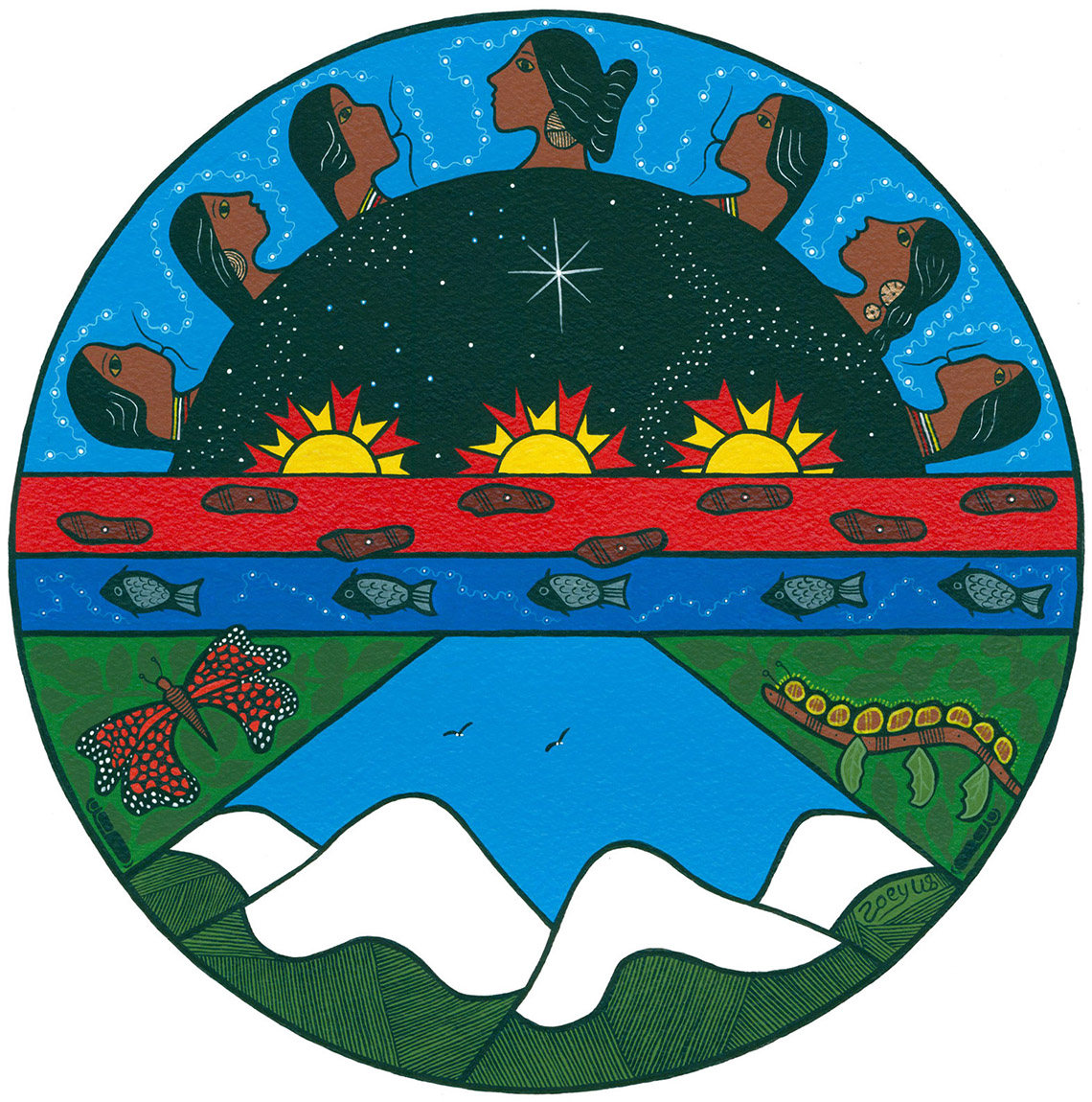Minds On
The Seven Grandfather Teachings
The Anishinaabe’s Seven Grandfather Teachings are a set of guiding principles that are passed down from generation to generation with the purpose of guiding the Anishinaabe in a good, peaceful life.
Access the following video “Anishinaabe Teachings About Life,” a TVO interview with Tanya Talaga, who discusses her podcast Seven Truths.
Student Success
Think-Pair-Share
Connecting to the Seven Grandfather Teachings
Discuss the following questions with a partner or record your responses using the organizational tool of your choice:
- What are the Seven Grandfather Teachings?
- In what way could these teachings guide the Anishinaabe?
- How might these teachings be passed down from generation to generation?
- How did this media text share information about the Seven Teachings?
Note to teachers: See your teacher guide for collaboration tools, ideas and suggestions.
Action
Understanding the message
Our Minds On activity introduced us to the Anishinaabe’s Seven Grandfather Teachings through the short video clip of Tanya Talaga. We learned that the purpose of the Seven Teachings in Anishinaabe culture is to guide them in a good, peaceful life.
The following three images depict different examples of Indigenous artists’ representations of the Seven Grandfather Teachings from their own unique perspectives.
Each of these media texts contain explicit messaging about the Seven Grandfather Teachings by referencing the actual teachings. They also contain implied messaging about the Seven Teachings which will vary by how each artist communicates their message.
As you explore the following images consider how each artist shares their perspective on the Seven Teachings as a media text. How are they different? How are they similar?
Image one:
 Description
Description
A circle is divided into four equal sectors depicting a medicine wheel. The top sector is white and labelled Winter; it contains the word “TRUTH,” and outside the circle are a polar bear and snow owl. The right sector is yellow and labelled Spring; it contains the words “WISDOM” and “LOVE,” and outside the circle are a bald eagle and mouse. The bottom sector is red and labelled Summer; it contains the words “BRAVERY” and “RESPECT,” and outside the circle are a turtle and deer. The left sector is black and labelled Fall; it contains the words “HUMILITY” and “HONESTY,” and outside the circle are a black bear and bison.
Image two:
 Description
Description
A large mural painted on a white brick wall contains a red and yellow teepee with a turtle on it centred in a field of green grass. There are six dark green pine trees on the grass and a blue river runs through the field behind the teepee. To the right of the teepee there is an eagle flying above Sabe (or sasquatch) in the foreground and a beaver in the background. To the left of the teepee there is a black bear in the foreground and a wolf in the background. Behind everything is a rainbow arced across a light blue sky shaped like a buffalo.
Image three:
 Description
Description
A circular painting is separated into two halves horizontally by a red line with footprints on top of a blue line with fish. The top half contains a black semicircle dotted with white stars, and a large white start is centred above three yellow and red suns. Bordering this semicircle are the profiles of seven Indigenous elders on a blue background. The bottom half contains four snow-capped mountains, above which two birds fly in a blue sky. To their right is a green sector with a yellow caterpillar on a branch, and to their left is a green sector with an orange butterfly.
Explicit and implied messages
The previous images each represent a different Indigenous interpretation of the Seven Grandfather Teachings. Discuss these media texts with a partner or record your responses to the following questions using the organizational tool of your choice:
- What was one thing you learned from each image about the Seven Teachings?
- How were these media texts similar? How were they different?
- Were you able to identify the explicit messages in each image?
- Were you able to identify the implied messages in each image? Were there any references to the Seven Teachings that were not obvious at first?
Comparing media texts
In each of the previous images an Indigenous artist interpreted the Seven Grandfather Teachings. In our Minds On video, Tanya Talaga discussed the Seven Teachings from her own perspective.
In which media text did you learn the most and gain a stronger understanding about the Seven Grandfather Teachings? Why do you think that media text was effective for you?
Consolidation
Indigenous media texts
The three images you explored for our Action activity were created by Indigenous people sharing their own cultural interpretations of the Seven Grandfather Teachings.
Record responses to the following questions using the organizational tool of your choice:
- Why is it important that media texts about the Seven Grandfather Teachings come from Indigenous peoples or communities?
- What are other types of media text can be used to share Indigenous interpretations of the Seven Grandfather Teachings?
- Out of the media texts that we explored earlier, which one would you choose to share with someone about the Seven Grandfather Teachings? Why?
- How would you explain the explicit and implicit messages of the text you are using to share?

Discover more Indigenous media texts
Explore a variety of media texts to find a different Indigenous interpretation of the Seven Grandfather Teachings. It could be a song, poem, article, text, dance, art piece, video, podcast, or any other text you can find. Answer the following questions using the organizational tool of your choice:
- What media text did you find?
- How do you know it is authentically Indigenous?
- What are the explicit and implicit messages of this media text?
- How did this media text further your understanding of the Seven Grandfather Teachings?
Reflection
As you read through these descriptions, which sentence best describes how you are feeling about your understanding of this learning activity? Press the button that is beside this sentence.
I feel...
Now, record your ideas using a voice recorder, speech-to-text, or writing tool.